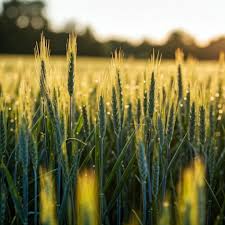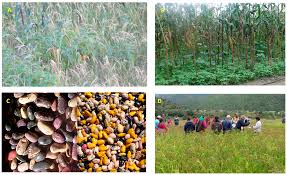In this article, genetic diversity, the analysis of genetic diversity, and the structure of the existing population are discussed as essential elements for the conservation and reintroduction of rare and endangered species.
Genetic variability is critical for a species to adapt to environmental changes and survive in the long term.
Knowledge of genetic diversity within a population and among populations is important, especially for identifying genetically unique structural units within a species and determining populations that need protection.
The genetic diversity of germplasm can be investigated using various techniques, including analysis of morphological and agricultural traits, isozymes, biochemical characteristics, and molecular markers.
Genetic diversity quantifies the magnitude of genetic variability within a population and serves as a fundamental source of biodiversity. For more than 80 years, the study of genetic diversity has primarily been the focus of evolutionary biologists.
The pioneering work of the modern evolutionary synthesis provided the theoretical and empirical foundation for the study of genetic diversity, including the derivation of new standard quantitative metrics such as heritability and genetic variance.
Read Also: 14 Medicinal Health Benefits of Epimedium grandiflorum (Horny Goat Weed)
Definition of Genetic Diversity in Agricultural

Genetic diversity is the variation in the genetic composition among individuals of a population, a species, an assemblage, or a community. Diversity on a genetic level is a reflection of the similarities and differences in the genes (segments of DNA on chromosomes) of individuals.
These variations can evolve as a result of many different processes, such as mutation, and physical or behavioral isolation of populations.
Read Also: Six Health Benefits of Sugarcane Juice
Importance of Genetic Diversity to Agriculture and Ecology

Genetic diversity provides the raw material for evolution by natural selection. The widespread evidence for evolution by natural selection in nature confirms the presence of genetic variation for traits that influence fitness.
Genetic diversity is not always an important driver of ecological processes, but it becomes ecologically significant when four non-exclusive conditions are met:
- When a community or ecosystem is dominated by one or a few primary habitat-providing species, genetic diversity can play a role similar to species diversity in other systems. Interestingly, relatively few studies have focused on the genetic diversity of foundation species.
However, the most wide-ranging effects (at the ecosystem level) result from changes in diversity within habitat-forming plant species, suggesting that greater attention should be placed on the genetic diversity of these dominant species.
- When genetic diversity in one species affects the abundance or distribution of a keystone species (a species with an effect disproportionate to its biomass in the community), it can have large indirect ecological impacts.
- Genetic diversity will only have prominent ecological effects for species that exhibit measurable genetic diversity within populations for relevant traits.
These effects cannot be assumed in the absence of genetic diversity data. For example, populations that are highly selfing, inbred, or have experienced a recent selective sweep for genes controlling ecologically important traits will likely exhibit low genetic diversity.
- Given the documented importance of genetic diversity and species diversity for disturbance response and stability, genetic diversity will be most relevant in highly variable environments or those subject to rapid anthropogenic change.
Sources of Genetic Diversity in Agricultural Species
Genetic diversity arises primarily as variants in the linear sequence of nucleotides in DNA. Mutations can occur in the coding region of genes, in the spacer regions within and between genes, in the number of copies of genes, the linkage relation between several genes, or even in whole chromosomes.
Do you have any questions, suggestions, or contributions? If so, please feel free to use the comment box below to share your thoughts. We also encourage you to kindly share this information with others who might benefit from it. Since we can’t reach everyone at once, we truly appreciate your help in spreading the word. Thank you so much for your support and for sharing!

